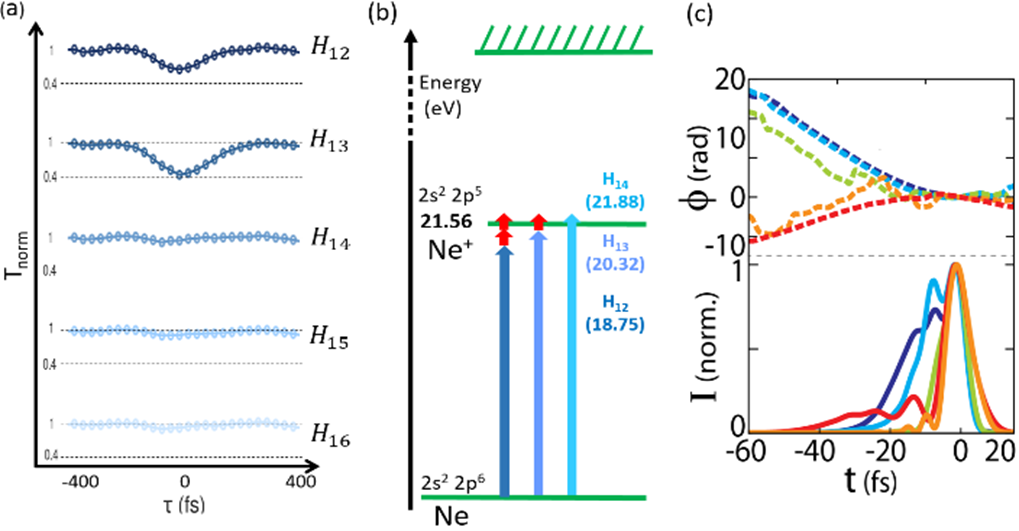TIBETAN-FOX measures femtosecond XUV pulses
Experimentalists around Juliette Dubois and Guillaume Lambert at LOA, together with theorists of LCPMR in Paris, have developed a new, simple method to measure the properties of femtosecond XUV (extreme ultraviolet) light pulses — with no restrictions on the source. Their technique, called TIBETAN-FOX (T-FOX), uses a frequency-resolved cross-correlation between an infrared (IR) and an XUV pulse, combined with transient multiphoton absorption in gases. Measuring how the gas absorbs the XUV light depending on the delay between the two pulses, and applying an iterative reconstruction algorithm on this data, allows retrieving the pulse shape and duration, including phase information, with sufficient dynamics to detect small pre- or post-pulses.
While earlier methods like SPIDER, RABBIT, or XFROG work mainly with special types of XUV pulses from high-harmonic generation (HHG) sources, T-FOX works with virtually any femtosecond to picosecond XUV source. It requires only a simple setup: a small gas cell, a low-intensity IR beam, and a standard XUV spectrometer — equipment already common in many labs.
T-FOX can retrieve detailed temporal profiles. Especially when one pulse is significantly shorter than the other, a direct analytic relation allows to retrieve then longer pulse’s envelope. Applying an iterative phase-retrieval algorithm on the frequency-resolved T-FOX data generalizes the method to arbitrary (femto- and picosecond) pulse durations of the IR and XUV pulses, and provides full intensity and phase information across time and frequency. This offers new ways to fine-tune ultrafast XUV light. For example, figure 1(c) shows that for particular chirp values of the IR laser generating the XUV high-order harmonics, it is possible to minimise the XUV pulse duration and to control the chirp of the resulting XUV pulses.



